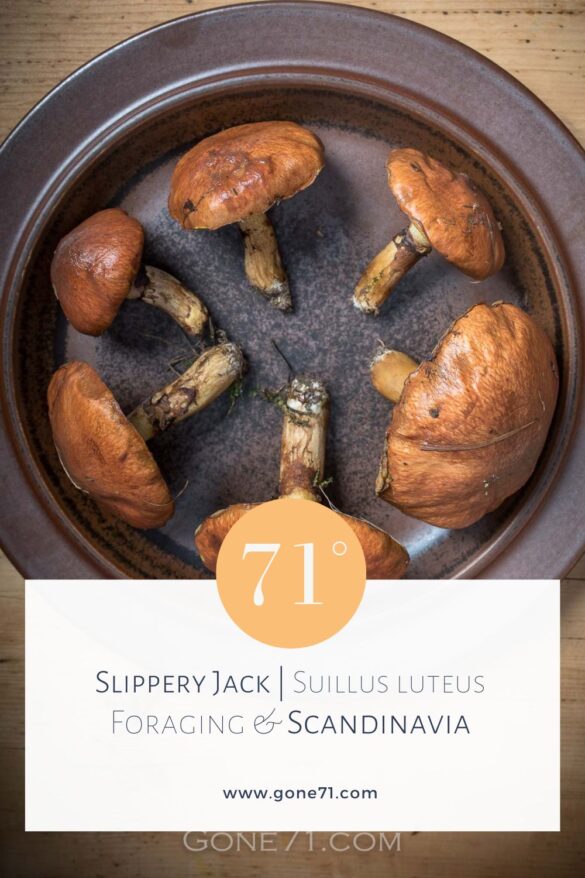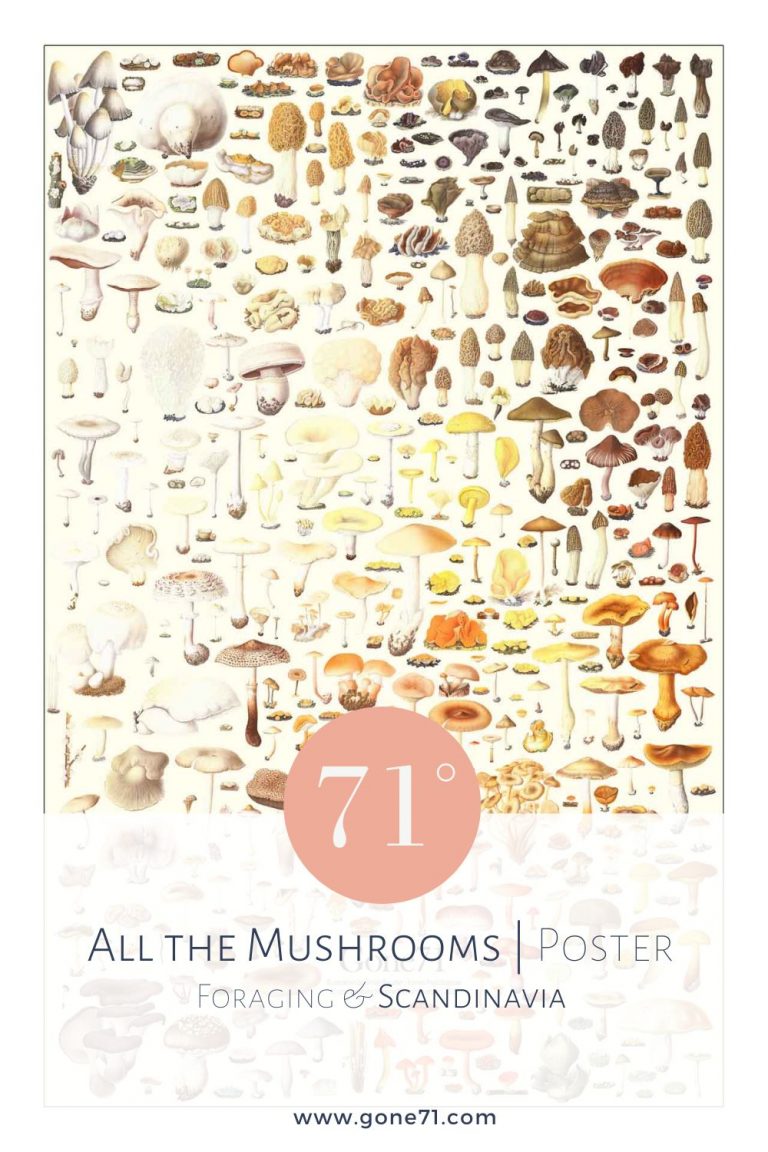swe.: Smörsopp | nor.: Smørsopp | fin.: Voitatti | dt.: Butterpilz, Butterröhrling | sci. syn: Viscipellis luteus, Ixocomus luteus, cricunopus luteus, boletus volvatus, boletus luteus a.o.
The name says it all – the slippery jack is a slimy beast. Nevertheless, it has a culinary value and goes very well in mixed dishes, fried or dried. We usually remove the greasy hat skin on the spot though
I have to admit that for a long time I was not particularly sympathetic to this mushroom due to its haptics. A couple of years later I know better and the slippery jack has gotten its place in my mushroom basket, similar to the larch bolete.
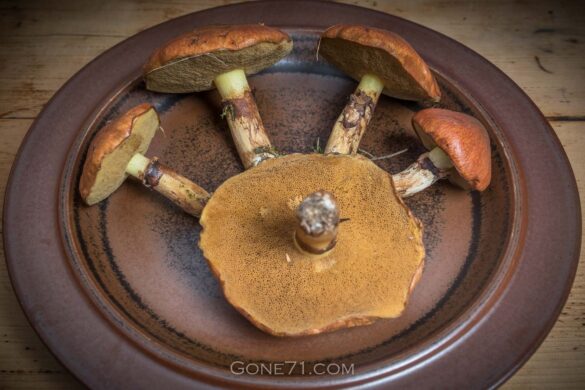
Only harvest mushrooms that you can identify with 100% certainty! The consequences can be life threatening if you are wrong. If you have the slightest doubt: do not eat the mushroom! This is not a mushroom guide! For correct identification consult a mushroom expert.
Appearance & habitat of the slippery jack
The Slippery jack (Suillus luteus) is a common mushroom throughout Europe and grows mostly in pine forests respectively in symbiosis with pine trees. It is also a successful conqueror and has made it to many parts of the world. It is now even found in southern Africa, where it was probably introduced together with its symbiotic partner, the pine.
In autumn, slippery jacks are often found in groups in central and northern Europe. In warmer areas and in southern Europe, it grows as early as spring.
The cap is brown and slimy but can easily be put off with a knife. The flesh underneath is slightly yellowish. In younger stages, the pore layer is covered by a white skin (velum), so that it is not immediately recognizable that it has pores at all. When the fruiting body gets larger, the velum ruptures and remains as a ring on the stem.
height: 4 – 10 cm
cap: 3 – 11 cm
months: June – November
colours: white-yellowish stem, brown-violet ring, brown cap
characteristic: very slimy cap
habitat: Coniferous forest, Mycorrhiza (symbiosis) with pines
taste: mild, slightly sour
smell: fruity
consumption: cooked (poisonous raw)
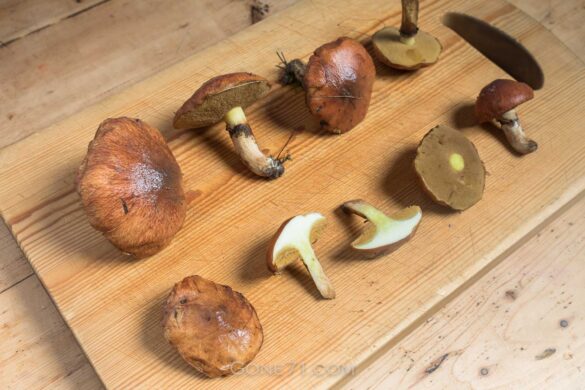
Confusing the slippery jack with other mushrooms
Slippery jack can be confused with the Larch bolete (Suillus grevillei) and other mushrooms from the Suillus family as the ringless yellow bolete (Suillus collinitus), the weeping or granulated bolete (S. granulatus) oder dem velvet bolete (Suillus variegatus).
All of the mushrooms mentioned are considered edible, although they too, as representatives of the genus Suillus, can cause intolerance in some people.
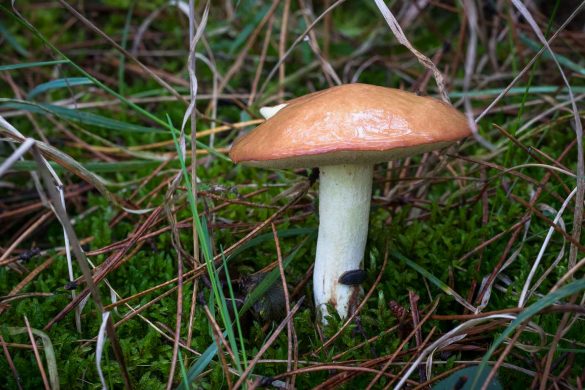
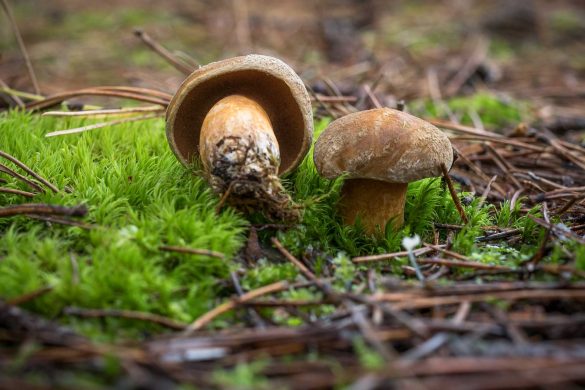
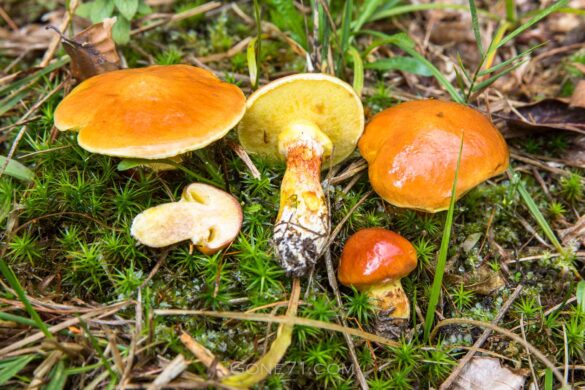
Cleaning the slippery jack
The slippery jack is an appreciated edible fungus in many parts of the world, but the tough, slimy cap skin is believed to cause digestive problems, and can even influence the quality of other fungi that the mushroom is stored with. Therefore, it is often recommended to pull away the cap skin from picked specimen preferably already in the forest.
The slippery jack should be processed very quickly. If you want to store it in the fridge for a short time, it is best to use a dry cloth.
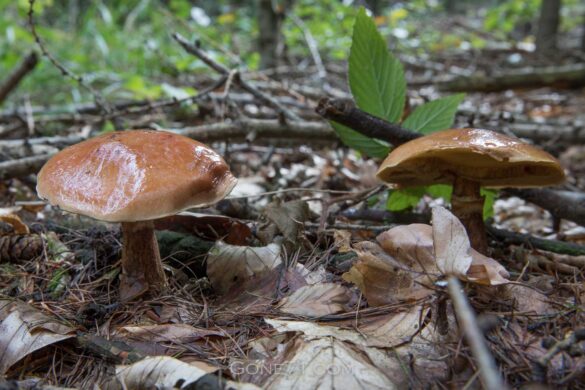
Drying the slippery jack
In principle, the slippery jack is good mushroom for drying. Without an dehydrator or oven, however, this is usually a difficult undertaking, as it takes a lot of time and involves a high risk of mold if the conditons are not perfect. If you want to dry mushrooms more often, you should definitely get a dehydrator. If you don’t have one at hand, you can use the oven as well.
- Cut the cleaned mushrooms into thin slices.
- Spread the mushrooms in a single layer on a baking tray lined with baking paper.
- Preheat the oven to approx. 50° and drie the mushrooms in it for several hours – depending on the thickness of the slices this will take 5 hours or more. This method is certainly not the most economical.
- The mushrooms should be turned occasionally. Depending on the oven, it can be helpful to leave the oven door ajar (e.g. pinch in a wooden spoon) so that the moisture can escape.
- The mushrooms are dry when they make a rustling noise when you pick them up or when they break when you bend them.
If they’re elastic, they’re not done yet.
Together with other dried mushrooms such as porcini, (red) scaber stalks or black trumpets, they can be processed further. They can also be ground into mushroom powder and used to flavor soups and dishes. The question of compatibility remains, however, here as well.
Slippery jack in the kitchen
Some sources say that the slippery jack has no distinct taste. We think, however, that it has a slight sour note to it and goes well mushroom in e.g. stews or sauces. Our favourite cooking method of choice is breading, though.
Slippery jack and intolerance
Note that slippery jack, like other fungi in the genus Suillus, can cause allergic reactions in some people. Foragers have to be aware of that and in case of reactions mushrooms from the Suillus family should not be eaten. It is best to only eat small amounts at the beginning.
We have compiled this overview with the best of knowledge and belief, but do not claim to be complete and reserve the right to make errors.
Learn more about poisonous mushrooms and mushroom poisons here
↓↓↓
Find some inspiration in other mushroom recipes
↓↓↓
